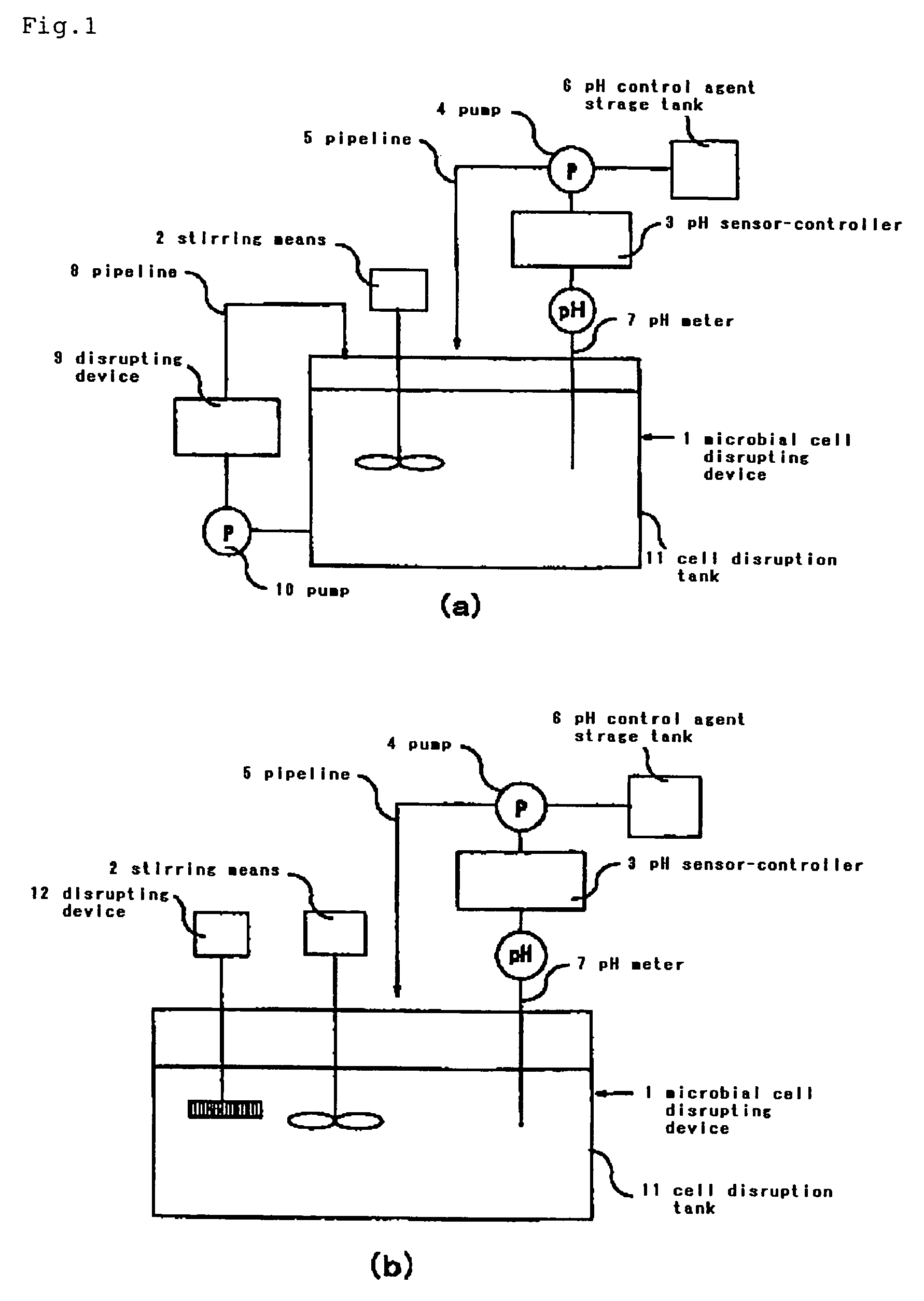Method of separating poly-3-hydroxyalkanoic acid
a polyhydroxyalkanoic acid and purification technology, applied in the field of poly3hydroxyalkanoic acid separation and purification, can solve the problems of large solvent recovery cost and solvent loss cost, limited use amenable to such recycling, and large difficulty in separating undissolved residues, etc., to achieve high yield, high purity, and good efficiency
- Summary
- Abstract
- Description
- Claims
- Application Information
AI Technical Summary
Benefits of technology
Problems solved by technology
Method used
Image
Examples
example 1
[0046]Using the p(3HB-co-3HH)-containing bacterial cells, 500 mL of a cell suspension was prepared and this suspension was placed in a 1 L reaction vessel equipped with a pH electrode and SILVERSON MIXER and incubated at 35° C. The pH electrode was connected to Lab Controller MDL-6C manufactured by B. E. Marubishi Co., Ltd. and the operation parameters were so set that when the pH of the suspension had dropped below a set value, a peristaltic pump would be actuated to deliver an aqueous solution of sodium hydroxide into the suspension until a set value had been reached. This operation protocol corresponds to the cell disruption equipment illustrated in FIG. 1(b). With the rotational speed of the SILVERSON MIXER set to 3,000 rpm and the pH setting of Lab Controller aligned to 11.8, stirring was continued for 2 hours (40 ml of 1 N aqueous solution of sodium hydroxide was required during this time). The treated suspension was centrifuged (3,000 rpm, 10 min) to give a precipitate. The p...
example 2
[0047]Except that the pH of the suspension was adjusted with an aqueous solution of sodium carbonate and the pH was set to 11.0, the procedure of Example 1 was otherwise repeated. The purity of the p(3HB-co-3HH) powder thus obtained was as high as 91% and the average molecular weight of the polymer was 890,000.
example 3
[0048]The Lab Controller described above was set to pH 11.8 as in Example 1 and stirring was carried out for 1 hour. The treated suspension was fed to Manton-Gaulin manufactured by APV Gaulin, Germany, and a physical disruption treatment was further carried out at 7,000 psi. After this treatment, the suspension was centrifuged (3,000 rpm, 10 min) to give a precipitate. This precipitate was washed once with water and twice with methanol and dried under reduced pressure to give a powder of p(3HB-co-3HH). This p(3HB-co-3HH) powder was exceptionally pure, i.e. 99%, and the average molecular weight of the polymer was 870,000.
PUM
| Property | Measurement | Unit |
|---|---|---|
| temperature | aaaaa | aaaaa |
| temperature | aaaaa | aaaaa |
| temperature | aaaaa | aaaaa |
Abstract
Description
Claims
Application Information
 Login to View More
Login to View More - R&D
- Intellectual Property
- Life Sciences
- Materials
- Tech Scout
- Unparalleled Data Quality
- Higher Quality Content
- 60% Fewer Hallucinations
Browse by: Latest US Patents, China's latest patents, Technical Efficacy Thesaurus, Application Domain, Technology Topic, Popular Technical Reports.
© 2025 PatSnap. All rights reserved.Legal|Privacy policy|Modern Slavery Act Transparency Statement|Sitemap|About US| Contact US: help@patsnap.com

